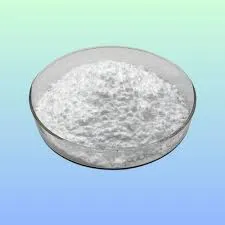
ოქტ . 01, 2024 11:26 Back to list
Exploring the Applications and Benefits of Methyl Hydroxyethyl Cellulose in Various Industries
Understanding MHEC Methyl Hydroxyethyl Cellulose
Methyl Hydroxyethyl Cellulose, commonly referred to as MHEC, is a derivative of cellulose, which is a natural polymer obtained from plant cell walls. MHEC is widely used in various industries due to its unique properties, including thickening, film-forming, and stabilization. This article explores the characteristics, applications, and environmental implications of MHEC.
Characteristics of MHEC
MHEC is a white to off-white powder that is highly soluble in water, forming a viscous solution. The compound is created through the reaction of methyl chloride and ethylene oxide with cellulose, leading to the etherification of cellulose fibers. The chemical structure of MHEC includes hydroxyl groups that provide solubility and enhance its functionality.
One of the key properties of MHEC is its ability to control viscosity. The viscosity can be adjusted through the degree of substitution, which dictates how many hydroxyl groups are replaced by methyl and hydroxyethyl groups. Consequently, MHEC can be tailored for specific applications depending on the desired viscosity and solubility. This versatility makes MHEC an ideal ingredient in formulations across various sectors.
Applications of MHEC
The applications of MHEC are diverse and encompass several industries, including construction, pharmaceuticals, personal care, and food
.1. Construction Industry MHEC is widely used as a thickener, water-retaining agent, and film-forming agent in construction materials such as tile adhesives, cement, and mortars. Its ability to improve the workability of mortar and enhance adhesion properties is essential for modern construction applications. Additionally, MHEC helps to prevent cracking and enhances the durability of building materials.
mhec-methhyl hydroxyethyl cellulose

2. Pharmaceutical Industry In pharmaceuticals, MHEC serves as a binder in tablet formulations and as a thickening agent in topical applications. Its non-toxic profile makes it suitable for various medical applications, including drug delivery systems. MHEC's ability to form gels at specific concentrations offers controlled release characteristics, ensuring that medications are released steadily over time.
3. Personal Care Products The personal care industry exploits MHEC's emulsifying and thickening properties. It is commonly found in cosmetics, shampoos, and lotions, contributing to the stability of formulations and providing a smooth, pleasant texture. Its moisturizing qualities also make it beneficial in skin care products, acting as a humectant that retains moisture.
4. Food Industry MHEC is recognized as a food additive, often used as a thickener, stabilizer, and emulsifier. It is particularly useful in dairy products, sauces, and dressings, where it improves texture and enhances mouthfeel. Given its approval by regulatory bodies like the FDA, MHEC is considered safe for consumption.
Environmental Considerations
As a cellulose derivative, MHEC holds an advantage in terms of environmental sustainability compared to synthetic polymers. Being derived from natural sources, MHEC is biodegradable, which reduces its environmental impact. However, the manufacturing process of MHEC involves chemicals that must be managed to ensure minimal ecological disruption.
Efforts are being made to optimize production processes to make them more environmentally friendly. Researchers are exploring sustainable sourcing of raw materials and improving the efficiency of the chemical reactions involved in MHEC production.
Conclusion
Methyl Hydroxyethyl Cellulose is a multifunctional ingredient that plays a significant role across various industries. Its unique properties enable it to serve as a thickener, stabilizer, and binder, making it a valuable asset in formulations from construction materials to personal care products. As industries push towards sustainability, MHEC's natural origin provides a promising alternative to synthetic additives. Understanding the benefits and applications of MHEC helps both manufacturers and consumers appreciate the significance of this compound in everyday products. As research progresses, MHEC will likely continue to evolve, enhancing its functionality and sustainability in the years to come.
-
Unlocking the Benefits of HPMC Products: A Gateway to Versatile Applications
NewsAug.07,2025
-
Unleashing the Potential of HPMC Ashland: A Comprehensive Look
NewsAug.07,2025
-
Tile Bonding Cellulose: The Key to Superior Adhesion and Durability
NewsAug.07,2025
-
Hydroxypropyl Methylcellulose Powder: The Versatile Component in Modern Pharmaceuticals
NewsAug.07,2025
-
Hydroxyethyl Cellulose: The Versatile Solution for Various Industries
NewsAug.07,2025
-
Hydroxyethyl Cellulose (HEC): The Versatile Polymer for Various Applications
NewsAug.07,2025







